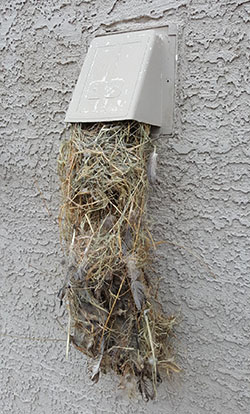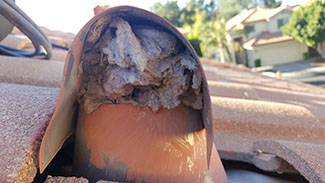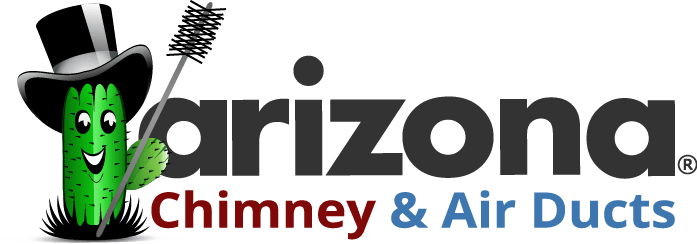Removing Loads of Lint
Proper Lint Removal
The clothes dryer is found in almost every home. We use it weekly if not daily. Its main purpose is to take the heat and moisture out of your clothes. If clothing is still damp at the end of a typical drying cycle or drying requires longer times than normal, this may be a sign that the lint screen or the exhaust duct is blocked.
 If you are wondering why this article is so long - keep reading! There is much more to lint removal than meets the eye and you can potentially have a house fire if you are not aware of how to clean your dryer vent thoroughly!
If you are wondering why this article is so long - keep reading! There is much more to lint removal than meets the eye and you can potentially have a house fire if you are not aware of how to clean your dryer vent thoroughly!
Keep in mind, cleaning the exterior dryer vent is not the same as cleaning the lint catch or screen inside the dryer.
"The dryer vent is an exhaust pipe that vents hot air to the outside. Vents can go long distances and are generally installed with bends. The bends create places where lint can collect, and birds can nest. It's important to keep the vent clean and properly maintained," said Rebecca, owner, Arizona Chimney & Air Ducts, a Rosie-Certified Partner.
A dirty and full dryer vent can cause:
- Appliance Inefficiency - Because the dryer will run longer than necessary.
- Wear and Tear - A dryer taking twice as long to dry clothes will cut its lifetime in half and lead to expensive repairs.
- Carbon Monoxide - Gas dryers that are not exhausting correctly can cause carbon monoxide in the home.
- Obstructions – Nests, dryer sheets, and pieces of clothes tangles with lint blocks the vent.
Come On Baby, Don't Light A Fire
The most serious consequence of not keeping the dryer vent clean is Fire and Property Damage. A dirty dryer and/or vent can ignite as a result of overheating and overworked safety controls.
According to the U.S. Fire Administration:
- 2,900 home clothes dryer fires are reported each year and cause an estimated 5 deaths, 100 injuries, and $35 million in property loss.
- Failure to clean the dryer (34 percent) is the leading cause of home clothes dryer fires.
- More home clothes dryer fires occur in the fall and winter months, peaking in January.
 Clean Dryer = Clean Clothes
Clean Dryer = Clean Clothes
"A proper annual dryer vent cleaning should include a visual inspection to make sure it is visibly sound," said Rebecca.
The Consumer Product Safety Commission's safety report, Overheated Clothes Dryers Can Cause Fires, recommends to "check the dryer vent and exhaust vent periodically to ensure that exhaust air is completely escaping."
How To Clean A Dryer Vent
"Every vent is installed differently. It can depend on the length of the vent, how many turns and how often the dryer is used every week," said Rebecca.
If you use a professional dryer vent cleaning service, there are several different applications depending on how your dryer is situated. "The most common technique is with the help of the blower motor and flexible extension rods with a bristle brush on the end. The rods easily navigate several 90 degree turns in your vent line," said Rebecca.
This is on a rotor system, so the spin action of the brush really gives the vent a thorough cleaning. The technician will move the rod/brush in and out repeatedly until the vent is clear of lint and obstructions.
The most common way is done from the outside which keeps your home spotless. This is an extremely effective method to give your dryer vent a clearer passage for the moist hot air to move through.
If you are going to clean the vent yourself, the Consumer Protection Safety Commission recommends the following steps:
Step 1 | Clean the lint screen/filter before or after drying each load of clothes.
Step 2 | Clean the dryer vent and exhaust duct periodically. Check the outside dryer vent while the dryer is operating to make sure exhaust air is escaping. If it is not, the vent or the exhaust duct may be blocked. To remove a blockage in the exhaust path, it may be necessary to disconnect the exhaust duct from the dryer. Remember to reconnect the ducting to the dryer and outside vent before using the dryer again.
 Step 3 | Clean behind the dryer, where lint can build up. Have a qualified service person clean the interior of the dryer chassis periodically to minimize the amount of lint accumulation. Keep the area around the dryer clean and free of clutter.
Step 3 | Clean behind the dryer, where lint can build up. Have a qualified service person clean the interior of the dryer chassis periodically to minimize the amount of lint accumulation. Keep the area around the dryer clean and free of clutter.
Step 4 | Replace plastic or foil, accordion-type ducting material with a rigid or corrugated semi-rigid metal duct. Most manufacturers specify the use of a rigid or corrugated semi-rigid metal duct, which provides maximum airflow. Metal flex ducting is a must as flexible plastic or foil type duct can more easily trap lint and are more susceptible to kinks or crushing, which can greatly reduce the airflow.
Step 5 | Make dryer vent cleaning a regular part of your home maintenance!
Oily Clothes Are A Hazard
Take special care when drying clothes that have been soiled with volatile chemicals such as gasoline, cooking oils, cleaning agents, or finishing oils and stains. If possible, wash the clothing more than once to minimize the amount of volatile chemicals on the clothes and,
preferably, hang the clothes to dry. If using a dryer, use the lowest heat setting and a drying cycle that has a cool-down period at the end of the cycle. To prevent clothes from igniting after drying, do not leave the dried clothes in the dryer or piled in a laundry basket.
Rosie's Safety Tip:
Do not leave your house while the dryer is running. A fire could easily ignite in the few minutes you are away from home.
Make dryer vent examinations a regular part of your home maintenance.
#LintRemoval
###
Sponsored By ARIZONA CHIMNEY & AIR DUCTS
 Arizona Chimney & Air Ducts specializes in chimney, dryer vent and air duct cleaning. A family owned and operated company, they have served the Phoenix metro area since 1985. A Rosie on the House Certified Partner since 2009, Arizona Chimney & Air Ducts, is also associated and affiliated with some of the most trusted names in the industry, including National Chimney Sweep Guild and the National Fire Protection Association. We have Team members with the CSIA Certification by the Chimney Safety Institute of America and National Fireplace Institute of Gas Hearth Appliances along with the EPA Universal technician Certification.
Arizona Chimney & Air Ducts specializes in chimney, dryer vent and air duct cleaning. A family owned and operated company, they have served the Phoenix metro area since 1985. A Rosie on the House Certified Partner since 2009, Arizona Chimney & Air Ducts, is also associated and affiliated with some of the most trusted names in the industry, including National Chimney Sweep Guild and the National Fire Protection Association. We have Team members with the CSIA Certification by the Chimney Safety Institute of America and National Fireplace Institute of Gas Hearth Appliances along with the EPA Universal technician Certification.
###
Photo Credits:
RELATED CONTENT:
- U.S. Fire Administration: Clothes Dryer Fires in Residential Buildings
- U.S. Consumer Product Safety Commission: Overheated Clothes Dryers Can Cause Fires
- Blog: Get Ready to Phone Your Refrigerator
- DIY Q&A: What Is Home Automation?
- DIY Q&A: I Want to Automate My Home. Where Should I Start?
- DIY Q&A: What Are The Benefits of Home Automation?
- Podcast: Smart Appliances & Pest Control with Action Termite
